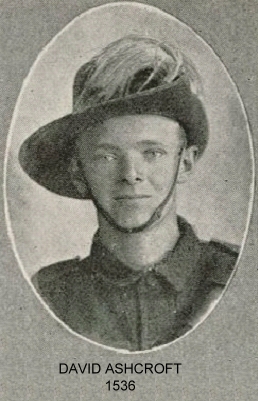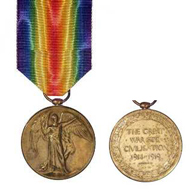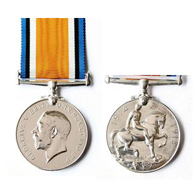ASHCROFT David
-

- 1536
- Private
- Driver/Trooper
- 2 Light Horse Regiment
- 2nd Division Ammunition Column
- Beerburrum Soldier Settlement
- Yes
- 30 July 1895
- Orbost, Victoria
- 9 August 1915
- HMAT A23 Suffolk
- 30 November 1915
- Sydney
-
Family
David James Ashcroft was born in Orbost, Victoria on 30 July 1895. He was the second son of twelve children born to Christopher and Mary Ellen (nee Wilson) Ashcroft who had married in 1887. Christopher Snr. had been a successful participant in the dairy industry and served as Chairman of the Mt. Bismark Butter Co-operative.
The Ashcroft family moved to the Western Downs region of Queensland just after the turn of the century but not before tragedy had befallen them in Victoria. On 4th February 1900, Ellen (8), James (6) and Annie (2) were burnt to death in a tent fire when the family went camping at nearby Cape Conran.
After Christopher and Mary moved to Queensland, four more children were born - Elizabeth, Frank, Olive May and William Alfred.
In 1903, Christopher and Mary Ellen were enrolled to vote at Bell in the Dalby district. Their address was "Everton" and Christopher was a farmer. From 1905 to 1919, their polling place was Ringing Plain but they were still at "Everton".
By the time David and Christopher Albert Ashcroft enlisted in 1915, two of their sisters had married Gourley brothers. Mary married Charles Frederick Gourley on 2 November 1908 and Margaret married Robert Gourley on 30 October 1909. Both couples lived at Moola via Kaimkillenbun. By end 1914, Margaret and Robert were parents to three girls - Mavis, Mabel and Kathleen (Allan followed in 1922); Mary and Charles were parents to Walter, Mary and Dorothy (Christopher, David, Nancy, Robert, John, Allen and Thelma followed by 1929). The older Gourley children had Ashcroft aunts and uncles of similar age.
Military Context
The 2nd Light Horse Regiment was raised at Enoggera on 18 August 1914. It was one of three regiments of the 1st Australian Light Horse Brigade - the first Australian mounted formation raised by Australia during the First World War. In 1914, the brigade formed part of the New Zealand and Australian Division but during the Dardanelles campaign in the battle of Gallipoli served in the Australian and New Zealand Army Corp.
The 2nd Light Horse Regiment landed at Gallipoli on 12 May 1915 (the horses, properly judged to be unsuitable for the terrain of the peninsular, were left behind in Egypt). After being withdrawn from Gallipoli to Egypt, 2nd Light Horse served in the Anzac Mounted Division from March 1916 as part of the Egyptian Expeditionary Force during the Sinai and Palestine campaigns until the end of the war.
Enlistment
David Ashcroft enlisted at Brisbane on 9 August 1915. David's older brother Christopher Jnr. had enlisted three days earlier. David declared his age as 19 years 1 month and occupation as "contractor". He was 5 feet 7 inches in height, weighed 142 pounds, of fresh complexion, with brown eyes and black hair. His religion was Church of England and he listed his father Mr C. Ashcroft of Moola, via Dalby, as his next of kin.
Military service (AIF)
David Ashcroft and his brother were both assigned to the 12th Reinforcements of the 2nd Light Horse Regiment, 1st Light Horse Brigade. David's Service Number was 1536 and Christopher's 1539.
The reinforcements embarked at Sydney aboard HMAT A23 "Suffolk" on 30 November 1915 bound for Egypt. The ship was of 7573 tons displacement with an average cruising speed of 12 knots. Brothers Christopher and David Ashcroft were both on the vessel.
Trooper David Ashcroft was taken on strength of 2nd Light Horse Regiment on 1 March 1916 at Heliopolis, Egypt but only ten days later was transferred to the 2nd Division Ammunition Column as a driver. So too was his brother Christopher. David was posted to the No.1 Section at Zeitoun but the Division had already begun deployment to France.
On 20 March 1916, David and Christopher Ashcroft embarked on the H.T. "Magdalena" at Alexandria for transport to France. They disembarked at Marseilles on 27 March. The 2nd Division remained in Flanders and France for the rest of the war. Its major battles of 1916 were at Pozieres and for Mouquet Farm (a phase of the Battles of the Somme).
In January through March 1917, the 2nd Division was involved in operations on the Ancre River. It captured Bapaume during the German retreat to the Hindenburg Line.
On 14 July 1917, Driver David Ashcroft was charged with conduct prejudicial to good order in that he interfered with private property contrary to Standing Orders. He was awarded 10 days of Field Punishment No.2 and he forfeited 10 days of pay at a rate of six shillings per day. The last payment on his fine was made on 15 May 1918. At least the period was one of relative quiet for the Division.
On 30 July 1917, Driver Ashcroft was granted leave to England from which he returned on 12 August. For ammunition supply, it was the lull before the storm. In the months of September and October, the 2nd Division was involved in some of the most intense battles of the War - Menin Road, Polygon Wood, Broodseinde, Poelcapelle, and Passchendaele. Collectively, they were phases of the Third Battle of Ypres.
On 16 August 1917, Base Records in Melbourne received a letter from David's sister Margaret (Mrs Robert Gourley) at Kaimkillenbun. She made it plain that she was very unhappy with the inability of the Army to ensure mail and parcels were safely delivered into the hands of the servicemen in France. It would seem that David Ashcroft had received no mail since Christmas, despite dozens of letters and at least three parcels having been sent (properly addressed): "he is about full up of things, thinking we are slackers and forgotten all about him". Base Records were prompt to offer a reply which should have soothed the situation.
On 20 February 1918, Driver Ashcroft was granted leave to Paris. He re-joined his unit on 1 March. On 17 March, he was again granted leave, this time to England. He re-joined his unit on 2 April. The co-ordination of Ashcroft's leave with a lull in 2nd Division fighting was uncanny. Leave would have been rostered to keep a minimum of critical resources available at all times but when Driver Ashcroft was absent from the field, it seemed Generals on both sides of the conflict held their fire!
On 4 April 1918, the 2nd Division fought in the Battle of Avre. Then followed Hamel (July), Bapaume and Mont St Quentin (August), St Quentin Canal (September) and Beaurevoir (October).
It would be an exaggeration to suggest Driver Ashcroft was involved in all actions of the 2nd Division. He supported some, and ammunition supply is a critical aspect of warfare. The enemy would use all available means to destroy the supply line. Ammunition supply operated behind the front line of Infantry, but it was a prized target for air attack and artillery fire.
Armistice was declared on 11 November 1918.
Driver Ashcroft reported to hospital with influenza on 17 January 1919. He was admitted for four days.
On 17 February, he was marched out to the Base Depot at Le Havre in preparation for return to Australia. On 26 February, he left France for England and marched in at the No.2 Training Battalion at Codford next day.
On 27 April 1919, Driver Ashcroft boarded the HMAT A54 "Runic" for repatriation to Australia. He disembarked at Melbourne on 10 June. He was discharged from the A.I.F. at Brisbane on 4 August.
David James Ashcroft was issued the British War Medal and the Victory Medal.
After the War
In the Electoral Roll of 1919, David Ashcroft was a farmer at Beerburrum. On 24 March 1920, he married Roberta Williams. Their first child, Robert David, was born on 30 July 1921.
David's brother, in life and in arms, Christopher, married Myrtle May Gladys Snell in 1922.
In the Roll of 1925, David was recorded at Manumbar Timber Company, Kinbombi (about eight kilometres from Goomeri) where he was a labourer. His wife Roberta was engaged in home duties.
David's sister, Margaret Gouley who had intervened to see his mail delivered in France, died too young on 13 September 1935.
In the Rolls of 1936 and 1937, David and Roberta were recorded at Ranges Bridge (a small rural community about 20km west of Dalby on the Old Warrego Highway). David was a farmer. His much younger brother William was also working in Jandowae as a labourer.
David's father Christopher died on 27 November 1939 in Toowoomba, aged 82 years.
In the Rolls from 1943 and 1963, David and Roberta were recorded at Canaga (a small rural area between Chinchilla and Jandowae). David was a farmer. In the Roll of 1949, their eldest son Robert Ashcroft appeared for the first time. He was also at Canaga, with the occupation of "mill expert".
David's mother Mary died on 1 August 1950, aged 83 years. It was fifty years since the tragic loss of her three children in the camping fire.
In the Electoral Roll of 1954, Robert Ashcroft was a farmer and recorded with his wife Agnes Enid at "Kia Ora", Baralaba. In 1958, his brother Arnold Gordon Ashcroft was a farmer on Portion 11, Canaga via Jandowae. In 1963, the property was "Maa-Leish" and by 1968 he was recorded there with his wife Margaret Goldie Ashcroft. They were still at "Maa-Leish" for the Roll of 1980.
On 24 March 1961, the Commonwealth Department of Repatriation acknowledged it had received a claim for Repatriation Benefits and sought copies of relevant medical records from Base Records in Melbourne.
Christopher Ashcroft, ex-A.I.F., who had been living at 30 Robert St., Torquay died on 25 February 1968 aged 73 years. He was buried in grave site 1445 of Appletree Creek Cemetery. His widow, Myrtle May Gladys (nee Snell) Ashcroft, died on 21 August 1977 aged 83 years and was also buried in Appletree Creek Cemetery in grave site 1584.
In the Electoral Rolls from 1968 to 1980, David and Roberta were recorded at 82 Cypress Street, Torquay, via Pialba. David had retired from work. In 1980, their son Robert and his wife Agnes were living at 327 Torquay Terrace, Torquay. Robert was a farmer.
David's brother William never married and he died in 1977, aged 64 years, at Jandowae. His sister, Mary Jane Gourley, died on 27 March 1979 in Jandowae.
David Ashcroft, ex A.I.F., died on 5 March 1986, aged 90 years, and he was buried next day in Polson Cemetery, Point Vernon, Hervey Bay.
Roberta Ashcroft died on 29 December 1989, aged 89 years, and she was buried on 2 January 1990 adjacent to her husband's plot in Polson Cemetery, Point Vernon.
David Robert Ashcroft died on 13 November 1993. His brother Arnold Gordon Ashcroft died on 17 April 2006, aged 73 years, and he was buried at Polson Cemetery, Point Vernon.
-
- Belgium
- Somme
- Western Front
- Ypres
-

-

-

- Returned to Australia
- 10 June 1919, Discharged 4 August, 1919
- 5 March 1986
- Hervey Bay, Queensland
- 90 years
- Polson Cemetery, Point Vernon
-
Australian War Memorial
National Australia Archives
Ancestry.comAdvice in April 2014 from Mr. Barry Gourley (grand nephew of David and Christopher Ashcroft) of Jandowae is gratefully acknowledged.
- Charlie50
